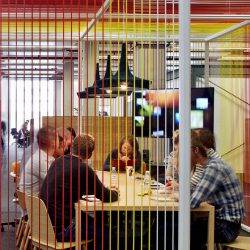April 21, 2017
Governments need to address perfect storm of low wages, productivity and automation 0
 Governments need to act now to address issues such as productivity, automation and stagnating or falling wages, according to two new reports from the International Monetary Fund (IMF). In both its Spring global policy agenda and world economic outlook, the IMF claims that workers are subject to a perfect storm of factors that will destabilise their jobs and lives unless governments implement robust policies to help them work more flexibly, acquire new skills and work alongside the new generation of automated technologies instead of in competition with them. Addressing the issues in a speech last week, IMF managing director Christine Lagarde said that governments need to create a new economic and social architecture that allows everybody to take advantage of the opportunities offered by technology and the current growth in the world economy.
Governments need to act now to address issues such as productivity, automation and stagnating or falling wages, according to two new reports from the International Monetary Fund (IMF). In both its Spring global policy agenda and world economic outlook, the IMF claims that workers are subject to a perfect storm of factors that will destabilise their jobs and lives unless governments implement robust policies to help them work more flexibly, acquire new skills and work alongside the new generation of automated technologies instead of in competition with them. Addressing the issues in a speech last week, IMF managing director Christine Lagarde said that governments need to create a new economic and social architecture that allows everybody to take advantage of the opportunities offered by technology and the current growth in the world economy.






















 With the UK facing at best, very slow growth, or even shrinkage, of the working population, future changes to migration levels into the UK due to Brexit could exacerbate the financial stresses and strains caused by the UK’s aging workforce. This is according to the
With the UK facing at best, very slow growth, or even shrinkage, of the working population, future changes to migration levels into the UK due to Brexit could exacerbate the financial stresses and strains caused by the UK’s aging workforce. This is according to the 
 Amos Tversky and Daniel Kahneman introduced the concept of Loss Aversion in 1984, highlighting people’s tendency to strongly prefer avoiding losses to acquiring gains. Most studies suggest that losses are twice as powerful, psychologically, as gains. Lose £100 and we will feel a remorse that easily outweighs winning £100. In a similar fashion we find it very hard to see future positives when confronted with short term loses. We understand easily what we have lost but cannot imagine what there is to be gained. Furthermore, as Frederic Bastiat wrote in an 1850 paper, “That Which is Seen, and That Which is Not Seen”, man has a tendency to “pursue a small present good, which will be followed by a great evil to come, rather than a great good to come, at the risk of a small present evil”. Put these together and it is no wonder that, by and large, the future of work, corporate real estate and the workplace is so widely misunderstood.
Amos Tversky and Daniel Kahneman introduced the concept of Loss Aversion in 1984, highlighting people’s tendency to strongly prefer avoiding losses to acquiring gains. Most studies suggest that losses are twice as powerful, psychologically, as gains. Lose £100 and we will feel a remorse that easily outweighs winning £100. In a similar fashion we find it very hard to see future positives when confronted with short term loses. We understand easily what we have lost but cannot imagine what there is to be gained. Furthermore, as Frederic Bastiat wrote in an 1850 paper, “That Which is Seen, and That Which is Not Seen”, man has a tendency to “pursue a small present good, which will be followed by a great evil to come, rather than a great good to come, at the risk of a small present evil”. Put these together and it is no wonder that, by and large, the future of work, corporate real estate and the workplace is so widely misunderstood.










February 28, 2017
A report into facilities management that is hard to swallow 0
by Simon Heath • Comment, Facilities management
(more…)